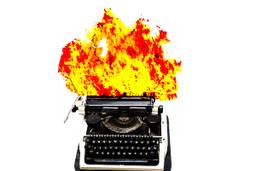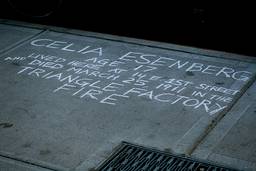This week seems all about celebrating the anniversary of the fall of the Berlin Wall, the end of the Cold War and the defeat of communism. Stories heroizing political leaders abound, and that line by Ronald Reagan, you know the one — “Mr. Gorbachev, tear down that wall” — has been heard on every network.
There is a growing history of this period, but the story of U.S. workers still remains to be told. This effort to remember our recent past has started me thinking about the late 1980s and my many friends then in the U.S. labor movement (organizers and functionaries). Many were involved with union movements abroad.
If you didn’t live through the ‘80s, though, and are relying soley on the mass media to educate you (which readers of ITT and this blog are certainly not doing) you are missing this important piece: labor mattered. Reagan, Bush, Gorbachev et al. were important, but without the push from below, would history have changed so quickly?
When I think of the central relationship of labor and working people to resistance movements, I am reminded of Solidarność, or Solidarity, the Polish Trade Union movement led by Lech Wałęsa in the 1980s.
Solidarity was the first non-communist trade union in the Eastern bloc. Based amongst shipyard workers in Gdańsk, Solidarity directly challenged the communist government of Poland through a series of strikes and street protests that eventually crippled the government’s abilities to exert authority.
The workers’ actions garnered international attention, and for a brief moment workers in the West seemed tuned into Polish workers’ struggles. Through a series of roundtable talks in 1989, somewhat free elections were held in Poland. The result was Walesa, the union president, became the president of Poland. The communist government of Poland was gone.
Regardless of what you think about Walesa’s subsequent neoliberal policies and quick attempts to westernize and modernize the Polish economy, we must remember that one principle ally in Solidary’s initial struggle against oppression was U.S. workers and their unions.
American workers seemed for the first time in many years in the ‘80s attuned to international struggle. Union newspapers were filled with stories about Latin America, South Africa, and Eastern Europe. What happened?
Today, unions seem so cocooned and defensive that they make the unions of the ‘80s seem vibrant. Yet the ’80s were some of the most hostile times for workers — a period of de-industrialization, a hostile National Labor Relations Board and, let’s not forget, the air traffic controllers’ struggle.
Today union leaders might occasionally speak of workers’ struggles elsewhere, but there is a singular focus on narrow domestic struggles. (Which are connected to global struggles, right?)
Was the difference back then because American unions in the 1980s were so very aggressively anticommunist? That aid to Eastern Bloc noncommunist trade unions was easy because it came with help from the CIA and allowed an embattled union movement to cozy up to anti-union U.S. administrations? Perhaps….








